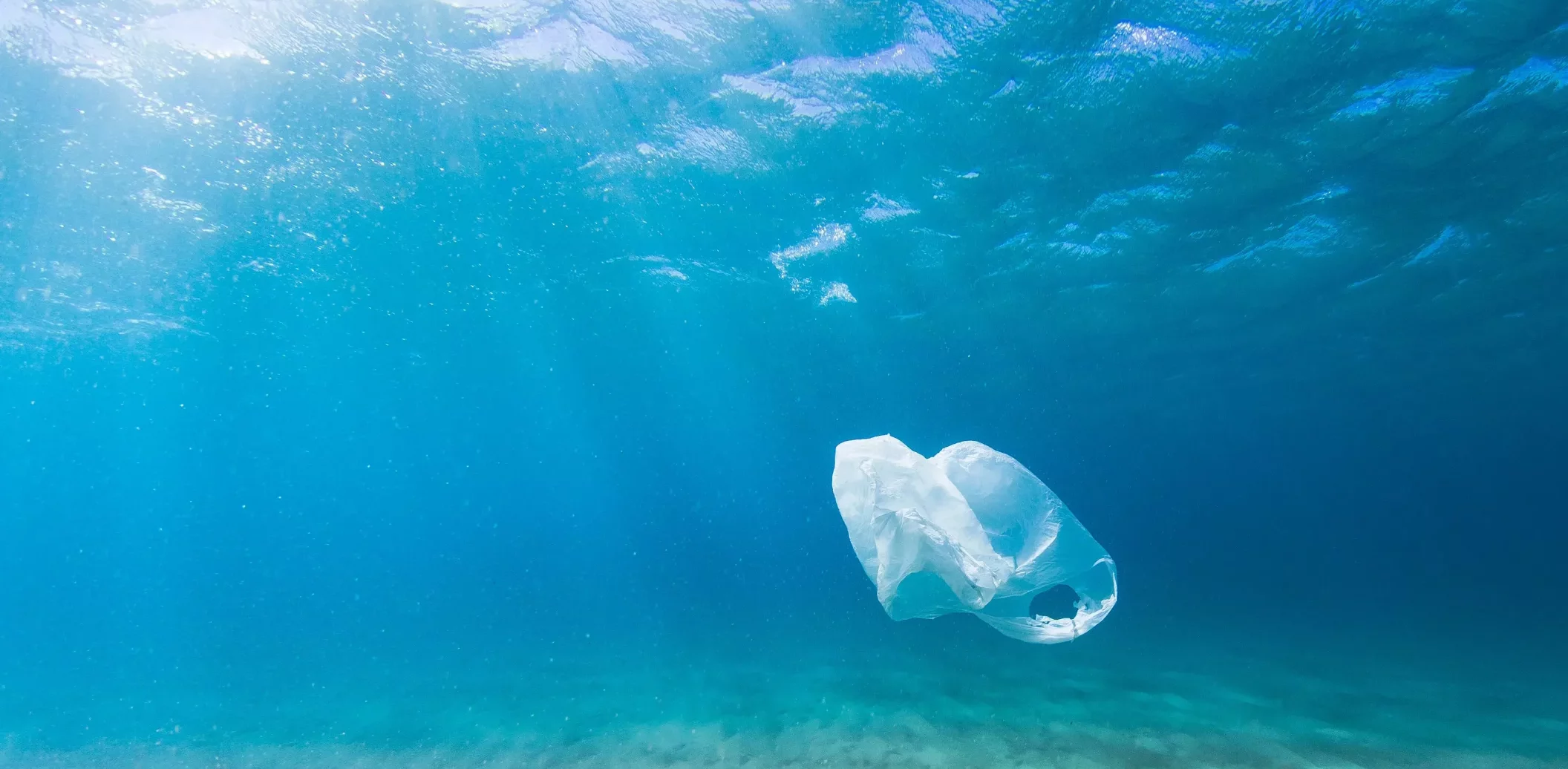Dr Amir Raza
Life Below Water: Understanding and Preserving Our Oceans
Life below water, referring to the world’s oceans, seas, and marine ecosystems, constitutes a vital component of our planet’s health and the well-being of its inhabitants. These expansive aquatic environments cover over 70 percent of the Earth’s surface and serve as the cornerstone for life on Earth. They are characterized by immense diversity, essential contributions to global and regional elemental cycling, and a critical role in climate regulation. Beyond these ecological functions, the oceans offer invaluable natural resources, including food, raw materials, biochemical substances, and renewable energy.
However, despite their immense significance, life below water faces a myriad of challenges and threats. It is essential to analyze these issues comprehensively, particularly in the context of Pakistan, and develop strategies to overcome the obstacles preventing the sustainable management and protection of marine ecosystems.
Beneath the shimmering surface of our planet lies an astonishing realm, one that is often overlooked but is vital to the health of our world – the world beneath the waves, the deep blue expanse known as our oceans. Life below water, in all its mesmerizing diversity, is a topic of profound importance. It encompasses not only the countless species of marine life that call the ocean home but also the delicate balance of ecosystems that regulate our climate, provide sustenance to billions of people, and serve as a source of inspiration and wonder. In this editorial journey, we will delve into the depths of our oceans, exploring the astonishing life forms that inhabit them, the challenges they face, and the critical role we play in preserving this precious aquatic realm.
The Ocean’s Inhabitants: A Breathtaking Biodiversity
Beneath the waves, a kaleidoscope of life unfolds. Oceans cover more than 70% of our planet’s surface and are home to an estimated 230,000 known species, with possibly millions more yet to be discovered. From the graceful dance of dolphins to the enigmatic world of deep-sea creatures, our oceans host a breathtaking diversity of life.
In the azure waters of coral reefs, vibrant fish dart among intricate corals. Majestic whales, the largest animals on Earth, glide through the depths. Tiny plankton, often overlooked but indispensable, form the foundation of marine food chains. Sea turtles embark on epic migrations, while colorful nudibranchs and octopuses exhibit astonishing displays of camouflage. The ocean’s residents span the size spectrum from the colossal blue whale to the microscopic phytoplankton.
The Wonders of Marine Ecosystems
The oceans are not just a collection of random creatures; they are intricately connected ecosystems that function harmoniously. Coral reefs, often referred to as the rainforests of the sea, are among the most diverse habitats on Earth. These underwater cities of calcium carbonate shelter a quarter of all marine species. They provide food, protection, and breeding grounds for countless marine organisms, including the mesmerizing clown-fish and the formidable reef sharks.
Kelp forests, swaying like enchanted underwater forests, offer sanctuary to sea otters and a plethora of fish. Mangrove forests, where the land meets the sea, serve as nurseries for juvenile fish and protect coastlines from erosion. The deep sea, in its darkness, hides creatures adapted to survive in extreme conditions, such as the elusive giant squid and bioluminescent organisms that create living constellations.
Threats to Oceanic Harmony: Human Impact
While the oceans are a realm of beauty and wonder, they face an array of threats, many of which are driven by human activity. Over-fishing, driven by the insatiable demand for seafood, depletes fish populations and disrupts marine ecosystems. Destructive fishing practices, such as bottom trawling, indiscriminately ravage the seabed and its inhabitants.
Climate change, driven by the relentless release of greenhouse gases, warms ocean waters, leading to coral bleaching, altered migration patterns, and unpredictable weather events. Plastic pollution, another byproduct of human convenience, chokes marine life, filling the oceans with plastic debris that can take centuries to degrade.
Conservation Efforts: A Beacon of Hope
Amid these challenges, there is hope. Conservation efforts are gaining momentum worldwide. Marine protected areas (MPAs) are established to safeguard critical habitats and allow over-exploited fish stocks to recover. Sustainable fishing practices are being adopted to ensure that seafood remains available for future generations. Innovations in ocean cleanup technologies aim to reduce plastic pollution.
Furthermore, there is a growing awareness of the importance of responsible tourism. Eco-conscious travelers seek out opportunities to explore the underwater world while minimizing their impact on fragile marine ecosystems. These efforts represent a collective commitment to preserving the vitality and beauty of our oceans.
The Call to Action: Our Responsibility
As stewards of this planet, it is our responsibility to protect life below water. The health of our oceans is intricately linked to the health of our entire planet. We must act collectively and urgently to address the challenges facing our oceans. This includes reducing greenhouse gas emissions, supporting sustainable fishing practices, and advocating for policies that prioritize ocean conservation.
Individual actions also matter. Reduce, reuse, and recycle to minimize plastic waste. Support organizations dedicated to marine conservation. Educate yourself and others about the importance of the oceans. When you visit coastal areas or engage in water-based activities, do so responsibly, respecting the delicate balance of marine ecosystems.
The United Nations (UN) plays a pivotal role in safeguarding and promoting life below water, which encompasses the protection and sustainable use of the world’s oceans, seas, and marine resources. The UN’s involvement in addressing the challenges faced by marine ecosystems is multifaceted and essential for achieving international sustainability goals. Here, we explore the significant role of the UN in life below water:
- Advocacy and Awareness: The UN serves as a global advocate for marine conservation and the sustainable management of marine resources. It raises awareness about the importance of life below water among member states, policymakers, civil society, and the general public. Through its various agencies, the UN promotes a deeper understanding of the ecological, economic, and social significance of marine ecosystems.
- Policy Guidance: The UN provides policy guidance and frameworks that member states can adopt to protect and preserve life below water. One of the most notable agreements in this regard is the United Nations Convention on the Law of the Sea (UNCLOS), which establishes the legal framework for the use and conservation of ocean resources. Additionally, the Sustainable Development Goal 14 (SDG 14) specifically focuses on life below water, setting targets and indicators for its sustainable management.
- Data Analysis: The UN, through its agencies like the United Nations Environment Programme (UNEP) and the Food and Agriculture Organization (FAO), conducts research and data analysis related to marine ecosystems. This information helps member states make informed decisions about the conservation and sustainable use of marine resources. The UN also supports data collection and reporting to monitor progress toward SDG 14.
- Capacity Building: Many developing countries lack the resources and expertise to effectively manage and protect their marine environments. The UN offers capacity-building programs and technical assistance to help these nations develop the necessary skills and infrastructure for sustainable marine management. These efforts empower countries to better protect their coastal and marine areas.
- Partnerships: The UN facilitates partnerships among member states, civil society organizations, academia, and the private sector to collectively address challenges related to life below water. Collaborative initiatives, such as the Global Ocean Forum and regional seas programs, promote shared responsibility and knowledge sharing for the conservation of marine ecosystems.
- Consumer Education: The UN encourages consumer education and sustainable consumption practices related to marine resources. Promoting responsible choices in seafood consumption, reducing plastic pollution, and minimizing the carbon footprint of maritime transport are examples of efforts aimed at protecting life below water.
- Circular Economy Promotion: The UN promotes circular economy principles to reduce waste and pollution in marine environments. Emphasizing product design for recyclability and encouraging the recycling and repurposing of marine debris are essential components of this approach.
- Resource Efficiency: The UN advocates for resource efficiency in the use of marine resources. This includes sustainable fisheries management, responsible aquaculture practices, and reducing the environmental impact of shipping and maritime industries.
- Monitoring and Reporting: The UN monitors progress toward SDG 14 and regularly reports on the state of life below water. This helps member states assess their performance, adjust policies as needed, and stay accountable to their commitments.
In the end, life below water is not a distant, separate world; it is an integral part of the intricate web of life on Earth. By protecting our oceans and the remarkable creatures that call them home, we safeguard our planet’s future and ensure that generations to come can continue to marvel at the wonders of life below water.
Causes of Challenges for Life Below Water:
- Environmental Degradation: The oceans are susceptible to various forms of environmental degradation, such as habitat destruction, coral reef bleaching, and ecosystem imbalances due to human activities.
- Overfishing: Overexploitation of marine resources, driven by unsustainable fishing practices, poses a severe threat to aquatic life and food security.
- Climate Change: Rising sea temperatures, ocean acidification, and extreme weather events associated with climate change harm marine ecosystems and biodiversity.
- Pollution: Contamination from plastic waste, oil spills, and industrial discharges deteriorates water quality and negatively impacts marine life.
- Lack of Conservation Efforts: Inadequate protection of marine areas and ecosystems further exacerbates the challenges faced by life below water.
Comparative Analysis in Pakistan:
In Pakistan, life below water plays a crucial role in the livelihoods and well-being of coastal communities. However, the region also confronts many of the global challenges discussed above, with specific localized factors exacerbating these issues. These include overfishing due to economic pressures, pollution from urban and industrial sources, and climate change-induced sea-level rise threatening coastal areas.
Causes of Lack of Life Below Water Preservation in Pakistan:
- Weak Regulatory Framework: Inadequate laws and regulations for marine resource management hinder conservation efforts.
- Lack of Awareness: Many coastal communities lack awareness about sustainable fishing practices and marine conservation.
- Limited Resources: Financial constraints and limited infrastructure impede initiatives aimed at protecting life below water.
Removing Barriers to Life Below Water Preservation:
- Legislative Reforms: Strengthening and enforcing laws related to marine resource management is essential. This includes implementing sustainable fishing quotas and regulations to reduce overfishing.
- Community Engagement: Empowering coastal communities through education and awareness programs on sustainable practices and the importance of marine conservation.
- Financial Support: Allocating funds for research, monitoring, and the establishment of marine protected areas to safeguard critical ecosystems.
Recommendations for Comprehensive Action:
- Promote Sustainable Fishing: Encourage sustainable fishing practices through education, incentives, and regulatory measures to prevent overfishing and protect marine life.
- Marine Protected Areas: Establish and effectively manage marine protected areas to preserve biodiversity and mitigate the impacts of climate change.
- Pollution Control: Implement stringent pollution control measures to reduce plastic waste, industrial discharge, and oil spills.
- Climate Resilience: Develop strategies for climate adaptation and resilience in coastal communities to address rising sea levels and extreme weather events.
- International Cooperation: Collaborate with neighboring countries and international organizations to address transboundary challenges and promote sustainable ocean management.
In conclusion, life below water is a critical aspect of global sustainability, with oceans and marine ecosystems serving as invaluable resources for the planet and its inhabitants. To ensure their preservation, concerted efforts, both locally in Pakistan and globally, are essential. This entails addressing the root causes of challenges faced by life below water and implementing comprehensive strategies to protect and sustain these vital ecosystems for current and future generations. The United Nations plays a crucial role in advancing the conservation and sustainable use of life below water. Its comprehensive engagement encompasses advocacy, policy guidance, data analysis, capacity building, partnerships, consumer education, circular economy promotion, resource efficiency, and monitoring. By leveraging its global reach and expertise, the UN contributes significantly to the global effort to protect marine ecosystems and ensure the well-being of present and future generations.
Subscribe our website for latest updates:
https://republicpolicy.com/shop/
Read More

















